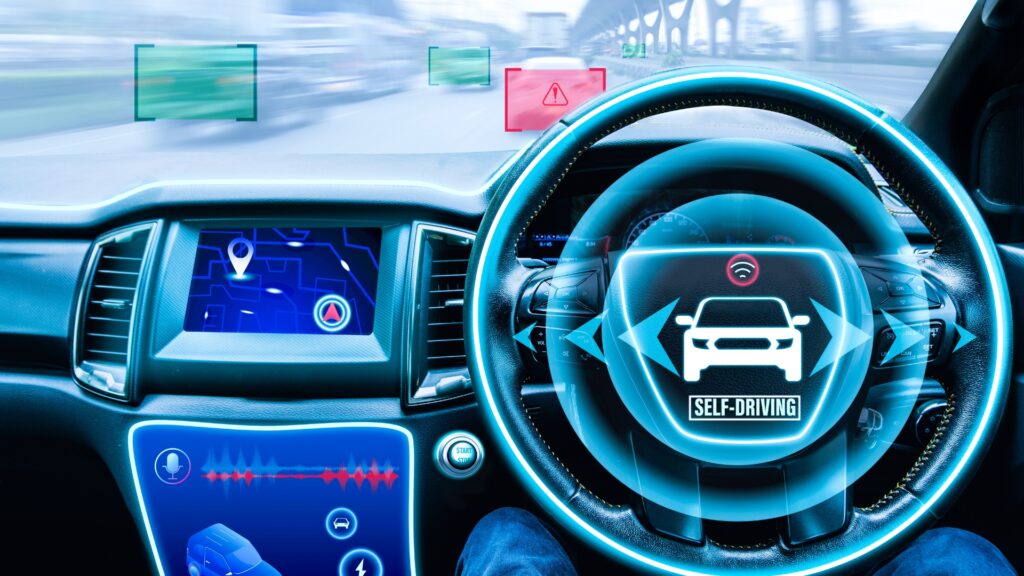Exciting advancements in self-driving car technology are revolutionizing the way we perceive transportation. As an enthusiast in the automotive industry, I’ve witnessed remarkable progress in autonomous vehicles that not only promise convenience but also prioritize safety on the roads. Companies at the forefront of this innovation, such as Tesla, Waymo, and Uber, are constantly pushing boundaries to bring us closer to a future where self-driving cars are the norm.
In this article, I’ll delve into the latest breakthroughs in self-driving car technology, exploring how artificial intelligence, machine learning, and sensor systems are shaping the vehicles of tomorrow. From enhanced navigation capabilities to real-time decision-making algorithms, the evolution of self-driving cars is reshaping our understanding of mobility. Join me as we embark on a journey through the exciting world of self-driving car advancements.
Current State of Self-driving Car Technology
Exploring the current state of self-driving car technology reveals a landscape marked by continuous innovation and progress. Companies like Tesla, Waymo, and Uber are at the forefront, pushing the boundaries of autonomous vehicle development. These industry leaders are leveraging cutting-edge technologies to enhance the safety, efficiency, and user experience of self-driving cars.
Key areas of advancement include artificial intelligence, machine learning, and sensor systems, which play a pivotal role in improving the navigation and decision-making capabilities of autonomous vehicles. These technologies enable self-driving cars to interpret complex traffic scenarios, navigate challenging environments, and make real-time adjustments to ensure a safe and smooth journey for passengers.
Tesla, known for its Autopilot feature, continues to refine its autonomous driving capabilities through over-the-air software updates. Waymo, a subsidiary of Alphabet Inc., has made significant strides in developing self-driving technology through extensive real-world testing. Uber, with its autonomous vehicle research program, is also contributing to the evolution of self-driving car technology.
Overall, the current state of self-driving car technology showcases a landscape ripe with innovation and potential, promising a future where autonomous vehicles play a central role in revolutionizing transportation.
Recent Innovations in Self-driving Cars
I’ve been following the latest developments in self-driving car technology, and it’s fascinating to see how far we’ve come. Let’s dive into some of the recent innovations that are shaping the future of autonomous vehicles.
Enhanced Sensor Technologies
In the realm of self-driving cars, sensor technologies play a crucial role in ensuring safe and efficient navigation. Companies like Tesla, Waymo, and Uber are at the forefront of incorporating advanced sensor technologies into their autonomous vehicles. These sensors, including LiDAR, radar, and cameras, provide a comprehensive view of the vehicle’s surroundings, allowing it to detect obstacles, pedestrians, and other vehicles with precision. By continually refining and enhancing sensor technologies, these companies are pushing the boundaries of what autonomous vehicles can achieve in terms of safety and reliability.
Artificial Intelligence Enhancements
Artificial intelligence (AI) is the backbone of self-driving car technology, enabling vehicles to make real-time decisions and navigate complex environments autonomously. Tesla, Waymo, and Uber are leveraging AI to improve the decision-making capabilities of their autonomous vehicles. Through deep learning algorithms and neural networks, these companies are training self-driving cars to interpret and respond to dynamic road conditions, ensuring a smooth and safe driving experience. The continuous enhancements in AI not only enhance the efficiency of self-driving cars but also contribute to making them more adaptable to ever-changing road scenarios.
Challenges in Implementing Self-driving Car Advancements
Continuing with the exploration of self-driving car advancements, several challenges persist in implementing this cutting-edge technology.
- Regulatory Hurdles:
Navigating the complex web of regulations and laws surrounding autonomous vehicles poses a significant challenge. Ensuring legal compliance at both federal and state levels is crucial for the widespread adoption of self-driving cars. - Safety Concerns:
Addressing safety concerns remains a top priority. Overcoming the challenge of guaranteeing the safety of passengers, pedestrians, and other road users is essential to gaining public trust in autonomous vehicles. - Technological Limitations:
Despite rapid advancements, self-driving technology still faces limitations. Enhancing the efficiency and accuracy of sensor systems, refining AI algorithms for better decision-making, and improving cybersecurity measures are ongoing challenges. - Ethical Dilemmas:
Navigating ethical dilemmas related to self-driving cars, such as decision-making in unavoidable accidents or handling moral issues in complex traffic scenarios, requires careful consideration and industry-wide consensus. - Infrastructure Adaptation:
Adapting existing infrastructure to support self-driving cars, including updating road signage, communication systems, and traffic management protocols, presents a significant challenge that requires collaboration between various stakeholders.
These challenges underscore the complexities involved in the widespread implementation of self-driving car advancements, highlighting the interdisciplinary nature of the field and the need for continuous innovation and collaboration to overcome them.
Future Prospects of Self-driving Cars
Exploring the future of self-driving cars unveils exciting possibilities that could revolutionize transportation. As companies like Tesla, Waymo, and Uber continue their relentless pursuit of innovation, the landscape of autonomous vehicles is poised for remarkable growth. Leveraging cutting-edge technologies, self-driving cars are on the brink of transforming the way we travel.
- Enhanced Safety Features:
Advancements in artificial intelligence (AI) and machine learning are driving the development of robust safety mechanisms in self-driving cars. With the ability to interpret intricate traffic scenarios, these vehicles prioritize safety without compromising efficiency. - Improved Navigation Systems:
The integration of state-of-the-art sensor systems, including LiDAR, radar, and cameras, provides self-driving cars with a comprehensive view of their surroundings. This leads to more precise navigation, enhancing their ability to maneuver through complex environments. - Smart Infrastructure Development:
The future of self-driving cars relies heavily on the establishment of a smart infrastructure that supports their seamless integration into existing transportation networks. This includes infrastructure upgrades to accommodate autonomous vehicles efficiently. - Ethical Decision-making Frameworks:
Addressing ethical dilemmas associated with autonomous vehicles is a key area of focus for future advancements. Developing robust decision-making frameworks for unavoidable accidents ensures that self-driving cars act in the best interest of all stakeholders. - Regulatory Adaptations:
Navigating the regulatory landscape is crucial for the widespread adoption of self-driving cars. Collaborating with policymakers to establish clear guidelines and regulations will facilitate the integration of autonomous vehicles into mainstream transportation systems.
The future prospects of self-driving cars hinge on overcoming challenges while embracing opportunities for growth and innovation. By addressing key areas such as safety, navigation, infrastructure development, ethical considerations, and regulatory frameworks, the automotive industry is paving the way for a future where self-driving cars play a pivotal role in reshaping transportation as we know it.




